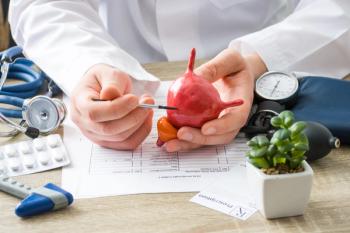
- July 2012 Digestive Health
- Volume 78
- Issue 7
Your Compounding Questions Answered
Q: Do you have a formulation for a nonsteroidal anti-inflammatory (NSAID) suppository (eg, etodolac, diclofenac, meloxicam)?
A: Indomethacin suppositories contain indomethacin 50 mg in a base composed mainly of polyethylene glycol 3350 and 8000 with glycerin. If commercially produced indomethacin suppositories are in short supply or unavailable at time of patient need, the following could be useful:
Ingredients
For 25 mg:
Indomethacin 0.300 g
Silica gel, micronized 0.240 g
Fatty acid blend 19.600g
Supplies and Equipment
Ceramic or Wedgwood mortar and pestle, balance (electronic, “3-place”), hot plate with stirring device, beaker(s), molds (2 mL)
Suggested Procedure*
1. Calculate amounts of ingredients required for the prescription; weigh accurately.
2. Combine the silica gel and indomethacin in the mortar and comminute to fine, impalpable consistency with the pestle.
3. Melt fatty acid base at 55°C-60°C. Turn off heat.
4. Begin stirring the melted fatty acid blend to form a vortex.
5. Sprinkle the powders into the vortex; continue to stir at medium speed until the suspension is homogeneous.
6. Allow mixture to cool with stirring to about 45°C-50°C.
7. Pour mixture into molds, slightly overfilling to allow for shrinkage.
8. Remove from molds, wrap as needed, and dispense. (Wrapping unnecessary if using disposable molds.) Label: Refrigerate.
*No claims are made as to the uses, safety, efficacy, or bioavailability of this preparation. Formulation for information purposes only.
The same concept could be applied for other NSAIDs that are directly bioavailable (metabolic activation not required). If using PEG blend (PEG 400 + PEG 8000 with propylene glycol), assume 1.1 g/ mL density (2.2 g per “blank” 2-mL suppository). If the displacement factor (DF) of the active ingredient (and silica gel, if used as suspending aid) is unknown, the DF can be determined experimentally by adding a measured amount of the ingredient to a partially filled mold cavity, filling completely, allowing to cool, and comparing weight of the heterogeneous suppository (make 5 or so) with the weight of a blank. Alternatively, some references suggest estimating the DF, using fatty acid blend DF = 0.7
Mr. Erickson is director of professional and director of professional services Gallipot, a Fagron company.
E-mail your compounding questions to
Articles in this issue
over 13 years ago
Health App Wrapover 13 years ago
Generic Drug Act Awaits Final Approvalover 13 years ago
FDA Policies Source of Drug Shortages, House Committee Reportsover 13 years ago
Generic Product Newsover 13 years ago
Can You Read These Rxs?over 13 years ago
Pet Peevesover 13 years ago
Case Studiesover 13 years ago
Rx Drop Boxes: Do They Work?over 13 years ago
Revocation of Pharmacist's License Reviewed by Appellate CourtNewsletter
Stay informed on drug updates, treatment guidelines, and pharmacy practice trends—subscribe to Pharmacy Times for weekly clinical insights.







































































































































































































